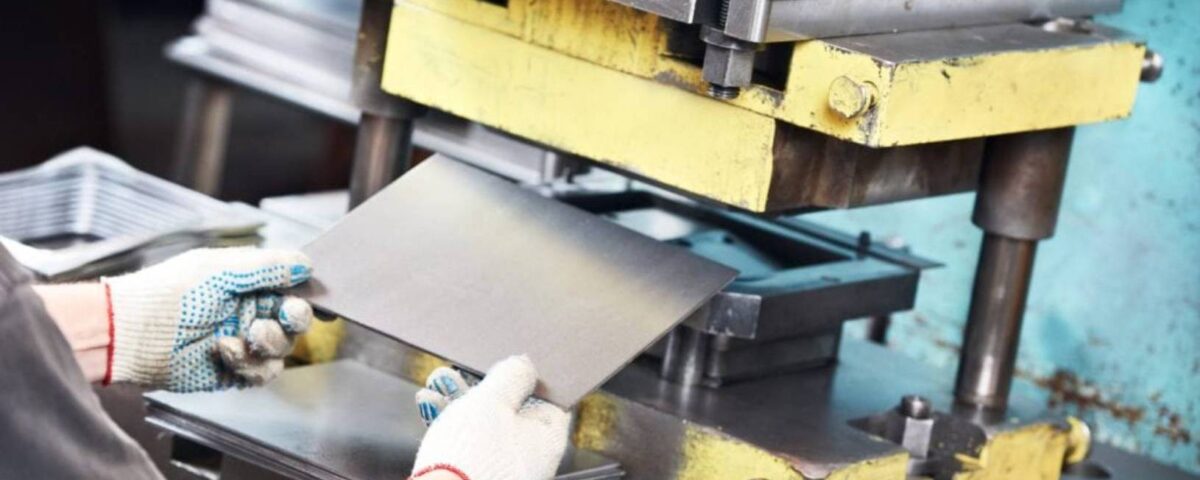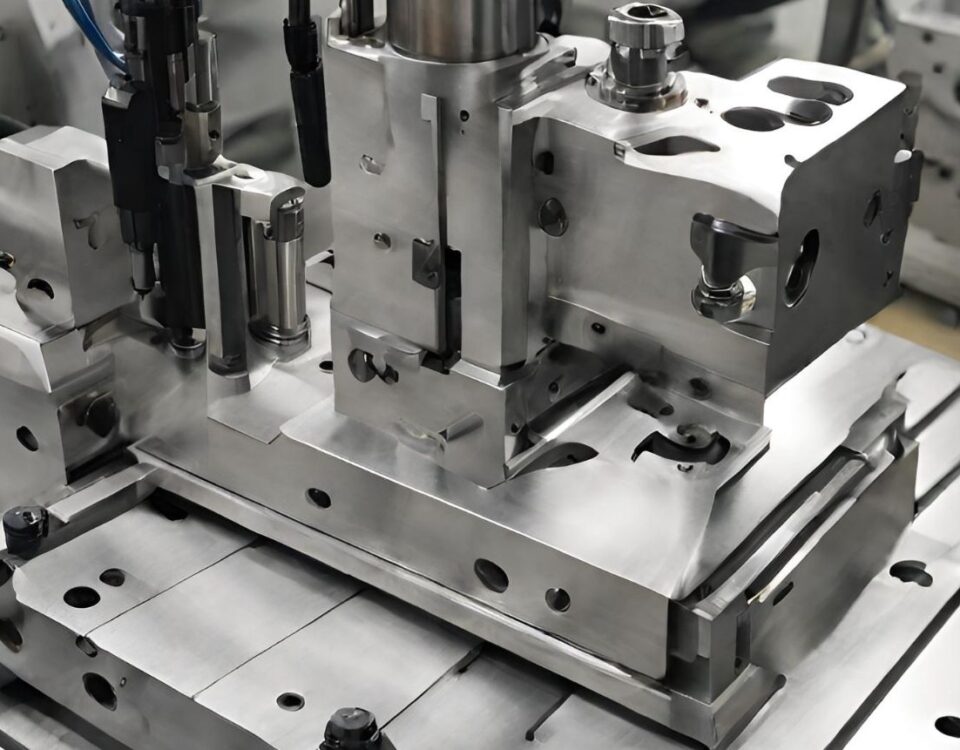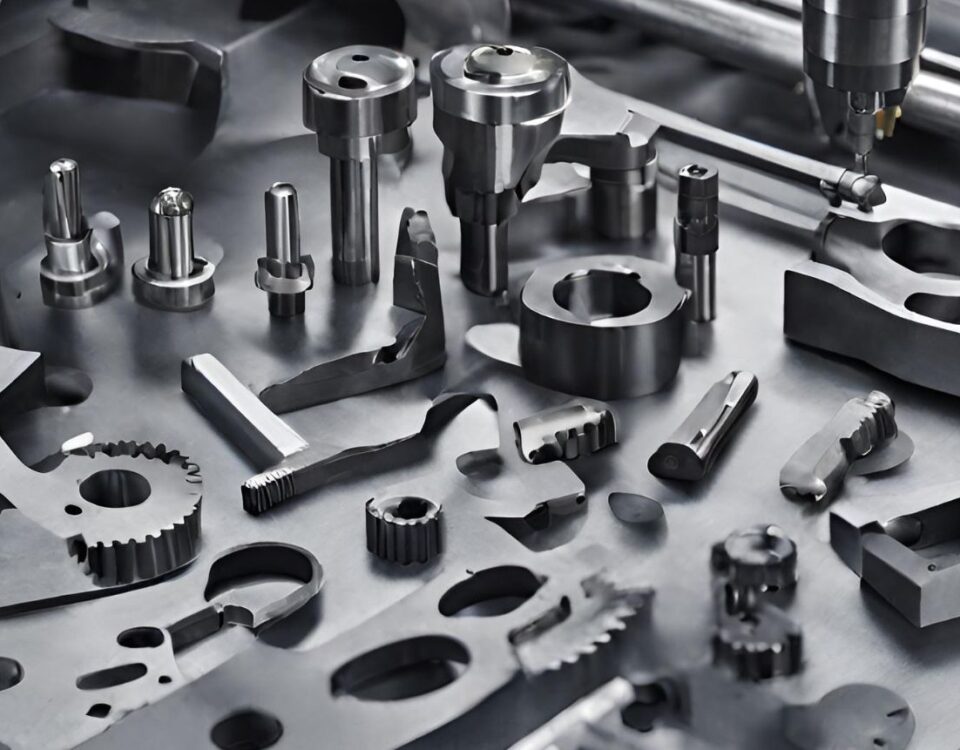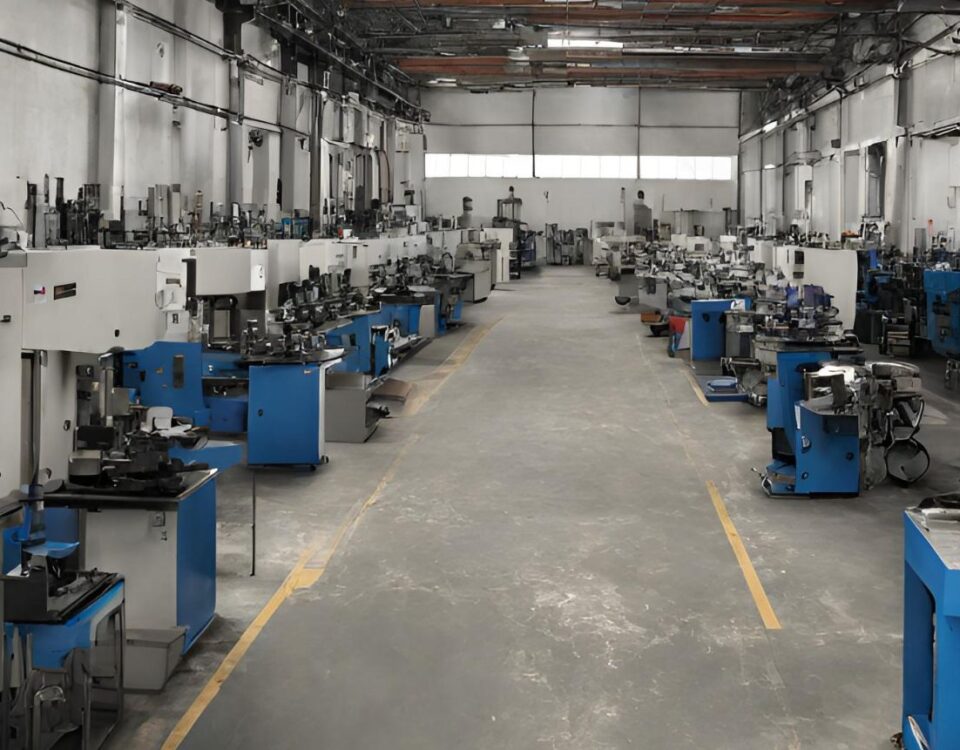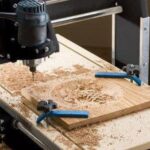
A Guide to Selecting CNC Equipment for Your Needs in Wood CNC Machining
30 October 2023
Describe 3D Printing services and The Way to Begin
2 November 2023What Is Metal Stamping?
Metal stamping is a cold-forming manufacturing process used to transform flat metal sheets into specific shapes. This complex process makes use of dies and stamping presses to convert metal into a new shape. During this process, the material will be subjected to pressure that will shape and shear the material into the desired shape. Metal stamping is widely used in production facilities and metal fabricators offering stamping services. It is a fast, highly durable, and cost-effective solution for large-quantity manufacturing needs for both short- and long-term production runs. Metal stamping may consist of one or more metal forming techniques, such as blanking, bending, punching, coining, flanging, and embossing. Metal stamping machines may do more than just stamping. For instance, they can cast, punch, cut, and shape metal sheets. However, before forming the material, stamping professionals must design the tooling machine via CAD/CAM/EDM/CNC engineering technology. EDM (Electrical discharge machining) and CAD (Computer-aided design) ensure accuracy. CAM ensures that each punch and bend maintains proper clearance, hence, optimal part quality. CNC (Computer numerically controlled) offers high precision and repeatability for every stamped piece.
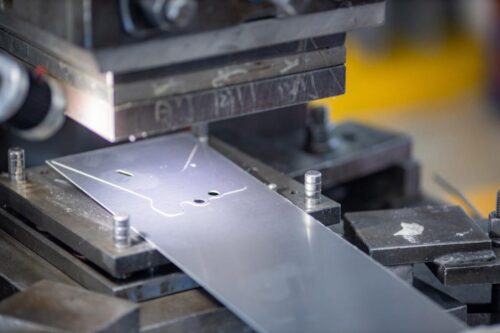
Types Of Metal Stamping
Deep draw, four-slide, and progressive stamping are the three main categories of metal stamping techniques.
1. Progressive Die Stamping
There are several stations in progressive die stamping, and each one has a distinct purpose.
Strip metal is first fed through a stamping press that advances. After the strip steadily unrolls from a coil, it enters the die press, where it is cut, punched, or bent at each station of the tool. A part is completed when the actions of each subsequent station build upon the work of the preceding stations. A manufacturer may need to use multiple presses, each completing a single action needed for a finished part, or frequently swap out the tool on a single press. Secondary machining services were frequently needed to fully complete parts, even when using multiple presses. Because of this, progressive die stamping is the best way to meet the following requirements for metal parts with complex geometry:
- Faster Turnaround
- Lower Labor Cost
- Shorter Run Length
- Higher Repeatability
2. Fourslide Stamping
Four-slide metal stamping is a great option for many applications because it has several benefits over traditional press stamping. Among these benefits are the following:
- Versatility for more complex parts
- More flexibility for design changes
As the name suggests, a four-slide has four slides, which allows for the simultaneous use of up to four different tools—one for each slide—to accomplish multiple bends. Material feeds into a four-slide and is quickly bent by each shaft that has a tool attached to it.
3. Deep Draw Stamping
Deep drawing is the process of forming a sheet metal blank into a shape by pulling it into the die with a punch. When the drawn part's depth is greater than its diameter, the technique is known as "deep drawing." This kind of forming is a more affordable option than turning processes, which usually call for consuming more raw materials, and is perfect for producing components that require multiple series of diameters.
Typical uses for deep drawing and items created with it include:
- Automotive components
- Aircraft parts
- Electronic relays
- Utensils and cookware
Short Run Stamping
Short-run metal stamping can be the best option for prototypes or small projects because it involves less upfront tooling costs. Following the creation of the blank, manufacturers bend, punch, or drill the part using a combination of die inserts and custom tooling components. Although the smaller run size and custom forming operations may result in a higher per-piece cost, short-run projects—particularly those that demand quick turnaround—may be more cost-effective due to the lack of tooling costs.
Stamping Operation
Placing flat sheet metal—either in coil or blank form—into a stamping press is the process of stamping, also known as pressing. The metal is formed into the required shape in the press by a tool and die surface. To form the metal, stamping techniques like punching, blanking, bending, coining, embossing, and flanging are employed.
- Bending – The material is deformed or bent along a straight line.
- Flanging – The material is bent along a curved line.
- Embossing – The material is stretched into a shallow depression. Used primarily for adding decorative patterns. See also Repoussé and chasing.
- Blanking – A piece is cut out of a sheet of the material, usually to make a blank for further processing.
- Coining – A pattern is compressed or squeezed into the material. Traditionally used to make coins.
- Drawing – The surface area of a blank is stretched into an alternate shape via controlled material flow. See also deep drawing.
- Stretching – The surface area of a blank is increased by tension, with no inward movement of the blank edge. Often used to make smooth auto body parts.
- Ironing – The material is squeezed and reduced in thickness along a vertical wall. Used for beverage cans and ammunition cartridge cases.
- Reducing/Necking – Used to gradually reduce the diameter of the open end of a vessel or tube.
- Curling – Deforming material into a tubular profile. Door hinges are a common example.
- Hemming – Folding an edge over onto itself to add thickness. The edges of automobile doors are usually hemmed.
Stamping presses can also be used for cutting and piercing. Combining the aforementioned techniques, progressive stamping involves moving a strip of material one step at a time through a row of dies.
Benefits Of Metal Stamping
- Precision
- Consistency
- Mass Production
- Workspace
Application Of Metal Stamping
Because of their distinct metalworking properties, metal stamping can be used on a wide range of materials for numerous applications in a multitude of industries. For the benefits of metal stamping specific to a given application, base common metals may need to be formed and processed into rare alloys. The aerospace, electrical, and defense industries, for example, demand beryllium copper's electrical or thermal conductivity, while the automotive industry uses steel and its various alloys for high-strength applications.
Metal stamping companies work in a variety of industries, including but not restricted to:
- Automotive
- Industrial Machinery
- Consumer Electronics
- Aerospace
- Electrical
- Telecommunication
Conclusion
Stamping is a versatile manufacturing process that involves shaping or forming metal sheets using dies and presses. It offers various types, including blanking, piercing, bending, and coining, each serving different purposes. The stamping process involves feeding metal sheets into a press, where the dies exert pressure to shape the material. Stamping finds applications in industries such as automotive, aerospace, electronics, and more. It offers advantages like high production efficiency, cost-effectiveness, and the ability to create complex shapes with precision. Understanding the types, processes, and uses of stamping can help businesses leverage this technique for efficient and accurate metal fabrication.

